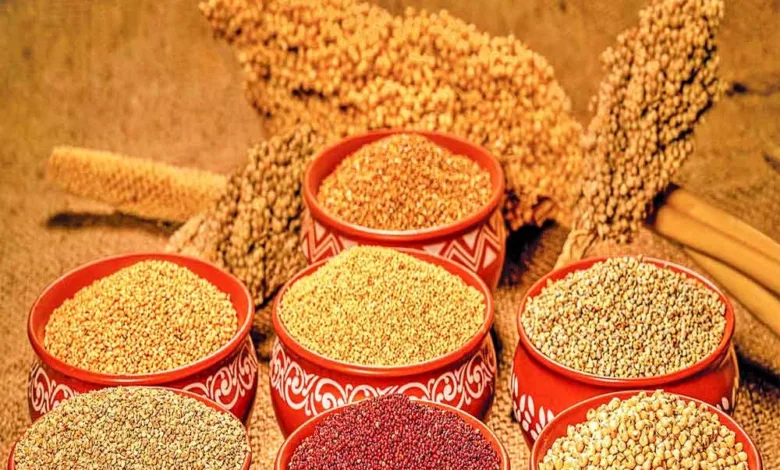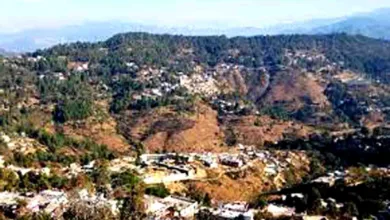Millets- ancient grains for contemporary human and planet health

Monday, 11 September 2023 | in Guest Column
GUEST COLUMN
 PUSHPA DHAMI
PUSHPA DHAMI
The United Nations declared 2023 “The Year of the Millets” to bring attention back to this group of grains on the call of the Food and Agriculture Organisation. But do you know why? Because, to create domestic and global demand and to provide nutritional food to the people, the Government of India had proposed to the United Nations for declaring 2023 as International Year of Millets (IYoM-2023). Also, our Prime Minister Narendra Modi highlighted the fact that “India is the largest producer of millet in the world and therefore, the responsibility of making this initiative a success also rests on the shoulders of Indians”. He said it must be made into a mass movement and awareness of millets among the people of the country should also be increased.
As per Ayurveda, food is considered superior medicine which not only promotes human health but also prevents diseases of any kind. Ayurveda originates from two separate Sanskrit words- Ayur, meaning “life” and Veda meaning “knowledge”. So, Ayurveda means the knowledge of healing and maintaining the quality and longevity of life. The mention of millets in the form of Trina dhanya (grass-derived grains), Kshudra dhanya (small-sized grains) or Kudhanya (inferior among grains) even in Ayurvedic Samhitas emphasise the fact that millets have always remained an important part of our diet to attain optimal health and wellbeing. In Yajurveda, there is mention of foxtail millet (priyangava), barnyard millet (shyamaka) and finger millet (Nartaki), thus indicating that millet consumption was widespread and pre-dates the Indian Bronze Age.
From an Ayurvedic perspective, millets are considered sweet (Rasa), heating (Virya), dry and light. Ayurvedic literature also suggests that apart from the dietary component, millets have been used as a therapeutic agent as well. Millets have high levels of energy, calcium, iron, zinc, magnesium, phosphorus, lipids and high-quality proteins. In addition, they are also rich sources of dietary fibre and micronutrients. Some millets like finger millet and pearl millet also exhibit antioxidant properties.
In terms of Ayurveda, the different millets like Yavanaala or Sorghum (Jowar) is used for Ruchya (to enhance taste perception), Trishnaghna (to pacify excessive thirst) and Kledaghna (to pacify excessive moisture content). It also has properties like Mutrajanan (urogenesis) and slightly Vrishya (aphrodisiac). Nartaki or Ragi (finger millet) is Sheeta (cold in potency) and used for Balya (to promote strength) and Vrishya (to improve fertility). Kangu/Priyangu (foxtail millet) is used for Sangrahi (to absorb excessive fluids and help normal formation of faeces and enhancing digestion), Brinhana (to nourish the body tissues), Shoshana (to dry up excessive moisture), Bhagnasandhanakrit (to heal fractures) and Vrishya (to improve fertility). However, they are also Durjara (difficult for digestion).
Cheenaka (proso millet) is used for Brihana (to nourish the body tissues) and Bhagnasandhanakara (to promote fracture healing). Gavedhuka (adlay millet) is used as Mutral (diuretic) and the roots of this plant are used in Pidita Artava (dysmenorrhea). It is also used for weight loss. Koradusha or Kodrava (Kodo millet) is used for Param Graahi (to absorb excessive fluids and helps in normal formation of faeces and enhancing digestion). It is also used as Pathya in Vrana (best diet in wounds and ulcers). Shyamak (barnyard millet) is used for Sangrahi (to absorb excessive fluids and help normal formation of faeces and enhancing digestion) and Dhatu Shoshak (to dry the body tissues). Sama or kutki (Little Millet) is used to lower cholesterol, promote quick metabolism, heal tissues and produce energy.
They are also used to prevent and treat lifestyle disorders like Sthoulya (obesity), Kushta (skin diseases), Prameha (diabetes), Atisaara (diarrhoea), Medoroga (diseases due to excessive lipids), Vrana (wounds and ulcers) and other Santarpanajanya Vyadhi (diseases due to over nourishment of single or multiple tissues). Most of the millets are among gluten free foods and thus, they can be a choice of diet in irritable bowel syndrome (IBS) and celiac disease.
The irony is that the introduction of cash crops and other staple grains like wheat and rice in many regions marginalised millet farming over the years and termed it as poor people’s crops. But, on the contrary, what they are is nutrient dense superfoods with the potential to address India’s and the world’s food and nutrition security by alleviating malnutrition, micronutrient deficiency and preventing lifestyle disorders. With their short growing season, resistance to drought and adaptation to poor, infertile soils, millets are considered climate-resilient crops. They are resistant to pests and diseases, tolerant to high temperatures and can be easily cultivated in arid climates without irrigation. They also do well as a part of the agroecosystem in rotation with other crops and can be used for food, forage and cover crop purposes. Additionally, millets also grow with minimal fertiliser inputs and release fewer greenhouse gases compared to other crops like rice, wheat and maize. Due to this, millets offer huge potential in improving soil health, reducing greenhouse gases emissions and minimising the impact of climate change. Apart from its nutritional and environmental benefits, millets can also reinforce local economies, especially in low-income countries. As millets are comparatively simple to grow and remove the need of using fertilisers and other specialised equipment, they offer a huge opportunity to improve the livelihood of smallholder farmers.
Intertwined with cultural and traditional beliefs and values, millets in India, other Asian regions and sub-Saharan Africa regions present a great promise to contribute to food security, diversify diets, improve farmer livelihoods, and improve planet health. But the choice remains with us. Unless consumers diversify staples by looking beyond rice and wheat, farmers will have no incentive to diversify cereal production. Without the required consumer and farmer support, these crops will continue to receive negligible investment compared to rice and wheat.
So, be a part of change, adopt millets in your diet for multitude health benefits and contribute to revive the planet’s health by making sustainable dietary choices. Together we can change the world.
(The author teaches at the department of health sciences in Final International University, North Cyprus. Views expressed are personal)






